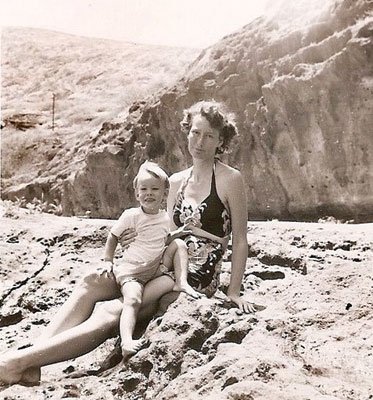To all outward appearances, longtime Gilroy resident Patience
Walker may seem to be an ordinary older woman, her face a wrinkled
road map reflecting nearly 85 years. But when she talks about her
adventures, her eyes dance and the years fall away.
“Each March during Women’s History Month, we remember and celebrate women from all walks of life who have shaped this great Nation.” – President Barack Obama
To all outward appearances, longtime Gilroy resident Patience Walker may seem to be an ordinary older woman, her face a wrinkled road map reflecting nearly 85 years. But when she talks about her adventures, her eyes dance and the years fall away.
“I attended the same school President Obama graduated from, you know,” Walker said. “He’s on the cover of our alumni bulletin.”
Walker graduated from Punahou, a top private school in Hawaii. When first established, native Hawaiians were not allowed to attend. By the time Walker was admitted, it had become multi-ethnic.
Walker’s mother’s name, Omakawaikuola’a, “means ‘spring flower opening,'” she said. “But it’s spring, as in a fresh water source.”
Walker’s great great grandmother was said to have been a chieftess on the island of Molokai and her great great uncle was famous island revolutionary, Robert Wilcox, who was descended from Hawaiian royalty and fought to restore the rights of the monarchy and Native Hawaiians. He served as the first delegate to Congress for the Territory of Hawaii.
During summers, Walker’s mother sent her to the big island of Hawaii to stay with her Aunt Queenie, who worked on Parker Ranch, one of the nation’s largest and oldest ranches.
“It was very isolated. There was no tourism back then,” Walker said. “It was cattle, sugar cane, and pineapple plantations – all undeveloped. My mother put me on the cattle boat when I was 10 and sent me to go stay with my relatives. It took overnight to travel between Oahu and Hawaii because of the stops it made along the way at places like Molokai to load and unload cargo, inlcuding cows. All the way back to Honolulu, you could hear them mooing.”
On Oahu, the 5-foot 11-inch Walker was an expert longboard surfer at a time when the majority of surfers were guys.
“The longboards were really heavy,” Walker said. “Made of solid wood. I had to drag it down to the ocean. You know those boards were dangerous; if you lost control of the board, you were liable to kill someone.”
She came by her love of outdoor sports naturally. Her mother’s ancestors came to Hawaii by canoe and her mother raced outrigger canoes. Her father was of German descent and an engineer at Pearl Harbor.
“The war started when I was a senior,” Walker said. “Our neighbor was yelling that the Japanese were bombing us, but we thought she was mad or drunk. Then my father got a phone call and his face went ashen.”
He raced to Pearl Harbor. Walker and her mother covered the windows and huddled under a blanket at night. Her father searched the island for equipment to pump water out of the harbor.
“My father could hear the men on one of the ships that had gone down in the attack – the U.S.S. Arizona. He could hear them pounding to get out, and he was trying everything to find a way to rescue them. It was horrible. When he came home, he showed us the bullet holes in his car from the Japanese planes.”
It wasn’t until 1955, when she was 31 and her husband accepted a job in California, that Walker ventured off the islands.
Many people advised her: “Never admit you’re Hawaiian to anyone.”
“That just made me announce it to everyone,” Walker laughed. “I never had any patience with racist attitudes. I wanted to go because I had never seen the world. And I wanted my four children to have a better choice of universities.”
“My mom was not your typical stay-at-home mom,” daughter Deborah Schwarz said. “She wasn’t out getting her nails manicured. She took us camping and the more remote the location, the better. We camped out in British Columbia and every state west of the Rocky Mountains. When she wasn’t planning our next wilderness adventure, she served as PTA president and volunteered for every activity, from Brownies to room mother.”
“There is one thing in my life I am proud of doing,” Walker said. “I was part of a group of women who started a restaurant to benefit children with autism. We ran that kitchen as all volunteers, and we called it ‘The Terrace.'”
It became a popular lunch destination in south Palo Alto and raised enough money to support a school for children who couldn’t attend mainstream schools. Walker helped operate the restaurant for 25 years. Today, the charity she helped found is called AchieveKids and has a second location serving children in east San Jose as well.
Widowed after 62 years, Walker felt a sense of isolation she hadn’t felt since being an island dweller. But rather than feeling sorry for herself, she decided to reach out to her fellow “inmates,” as she jokingly refers to residents of Gilroy’s Village Green Senior Community, starting a Thursday morning coffee hour that has become so popular that the 42-cup coffee maker Walker began with is no longer big enough. She added another 12-cup pot but even that ran out last week.
Her latest endeavor is just one more example of how Walker has lived her life: always willing to try new things, treating everyone as equal, keeping a positive attitude and volunteering to make a difference in her community.
To learn more about the charity Walker helped found for children with developmental disabilities, AchieveKids go to www.achievekids.org.















